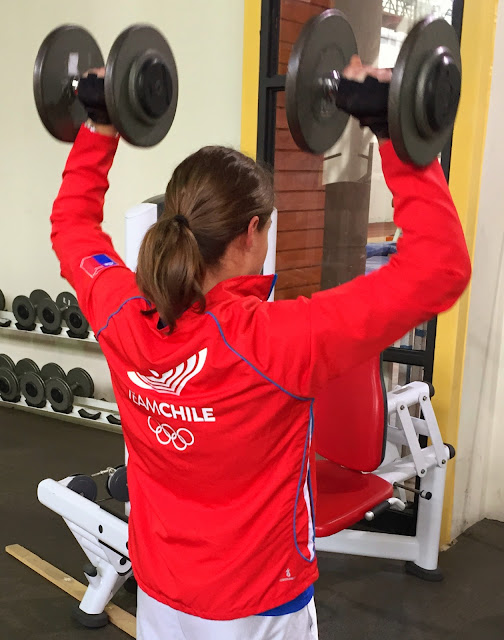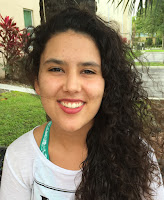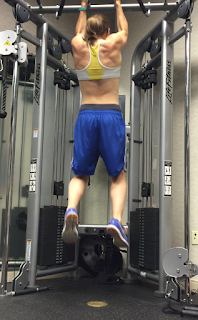What's it like in Chile?
I enjoy traveling and discovering different cultures and ways of life. So outside of basketball, I thought I'd touch on some of my cultural experience. Like others, when I travel to other countries (or even other states in the US), I notice differences in what I'm accustomed to. I grew up in the US, so that's the culture I defer to. So through that lens, here's an inside scoop on just a few cultural norms I've experienced while in Chile!
Eating/drinking

Churrasco burger is served with guacamole
- Meal times: This one is a biggie if you get "hangry" (hunger and angry combined), because meal times are later in the day. Lunch is at 2pm, and dinner at 9pm (or later). If you're used to an earlier schedule, you might want to eat a snack at 11am and 6pm. The Chilean rationale for eating later is you can do other activities beforehand, and after you eat you can go to sleep and not worry about feeling hungry again in the evening.
- Drinks: Most often, Chileans drink wine or juice with meals. If you ask for water you'll likely be served bottled water, which will cost the same as a soda. Though tap water is drinkable, it isn't very tasty, and if you ask for it you raise an eyebrow lol! Also, if you don't want to constantly buy bottled water, make sure you fill your water bottle whenever possible at trusted places
- Bread: It's a staple. Multiple pieces are served with almost every meal!
- Olives: Be careful, pits have not been removed!
- Avocado/guacamole on that? Avocado is often included in meals (with bread of course!), and is also put on hamburgers (one sandwich is called a Churrasco, pictured above). Yum!
- Meal times: This one is a biggie if you get "hangry" (hunger and angry combined), because meal times are later in the day. Lunch is at 2pm, and dinner at 9pm (or later). If you're used to an earlier schedule, you might want to eat a snack at 11am and 6pm. The Chilean rationale for eating later is you can do other activities beforehand, and after you eat you can go to sleep and not worry about feeling hungry again in the evening.
- Drinks: Most often, Chileans drink wine or juice with meals. If you ask for water you'll likely be served bottled water, which will cost the same as a soda. Though tap water is drinkable, it isn't very tasty, and if you ask for it you raise an eyebrow lol! Also, if you don't want to constantly buy bottled water, make sure you fill your water bottle whenever possible at trusted places
- Bread: It's a staple. Multiple pieces are served with almost every meal!
- Olives: Be careful, pits have not been removed!
- Avocado/guacamole on that? Avocado is often included in meals (with bread of course!), and is also put on hamburgers (one sandwich is called a Churrasco, pictured above). Yum!
| Churrasco burger is served with guacamole |
Transportation

Pesos are used for Chile's currency. Currently
~624 Pesos = $1 US. Agustín Arturo Prat
Chacón, on the 10,000 pesos bill, is the
first cousin of my great grandfather
- Public transportation: Rocks!! Getting around without a car is inexpensive and convenient. If you're accustomed to having your own car, it will be a little uncomfortable to familiarize yourself with the system, but once you get used to it, it's very handy! It's worth understanding the transportation system instead of just taking taxis, because taxis are one of the most expensive ways to get around. You'll probably want to stick to the nice metro/subway (one entry costs about $1.10), shared taxi cars (called colectivos, about $1.25), trains, and buses. I took a nice double decker bus from Santiago to Viña del Mar (about the distance between north Denver and south Colorado Springs) for about $4. I wish we had this in the US!
- Parking: It's tight, limited, and often not free. But if you're pregnant, the good news there's lots of expectant mother parking. Again, something we could adopt in the US!
- Public transportation: Rocks!! Getting around without a car is inexpensive and convenient. If you're accustomed to having your own car, it will be a little uncomfortable to familiarize yourself with the system, but once you get used to it, it's very handy! It's worth understanding the transportation system instead of just taking taxis, because taxis are one of the most expensive ways to get around. You'll probably want to stick to the nice metro/subway (one entry costs about $1.10), shared taxi cars (called colectivos, about $1.25), trains, and buses. I took a nice double decker bus from Santiago to Viña del Mar (about the distance between north Denver and south Colorado Springs) for about $4. I wish we had this in the US!
- Parking: It's tight, limited, and often not free. But if you're pregnant, the good news there's lots of expectant mother parking. Again, something we could adopt in the US!
| Pesos are used for Chile's currency. Currently ~624 Pesos = $1 US. Agustín Arturo Prat Chacón, on the 10,000 pesos bill, is the first cousin of my great grandfather |
Shrink your personal bubble!
Personal space in Chile is viewed differently, in greetings, traffic, public places, and living spaces. Because of smaller personal space, Chile views itself as a "warmer" culture than the US.
- Kisses as greetings: When women say hello or goodbye to either sex, they touch their right cheek to the other person's right cheek and make a kiss sound. They do this when meeting new people too. Men just shake hands with other men.
- Smaller spaces: The average person in Chile is smaller, so elevators, chairs, tables, houses, doors, hallways, bathrooms, etc. are also smaller.
- Rules of the road: They're more like guidelines ;) if you have a space bubble while driving, check that at the airport! Tailgating, riding in the middle of lanes, and honks are the norm.
Personal space in Chile is viewed differently, in greetings, traffic, public places, and living spaces. Because of smaller personal space, Chile views itself as a "warmer" culture than the US.
- Kisses as greetings: When women say hello or goodbye to either sex, they touch their right cheek to the other person's right cheek and make a kiss sound. They do this when meeting new people too. Men just shake hands with other men.
- Smaller spaces: The average person in Chile is smaller, so elevators, chairs, tables, houses, doors, hallways, bathrooms, etc. are also smaller.
- Rules of the road: They're more like guidelines ;) if you have a space bubble while driving, check that at the airport! Tailgating, riding in the middle of lanes, and honks are the norm.
Daily schedule
- The seasons are opposite: It's winter in all of the southern hemisphere! You'll definitely want to bundle up for being indoors, because heating/energy is conserved!
- Daylight: Chile decided not to "fall back" this year, so it doesn't get light until 9am. It's difficult to get up in the dark compared to the 5am sunrises in Colorado!
- On-time: Punctuality varies a lot. Coach Richi is very punctual so our practices and schedules start and end on-time. But with casual meals and hangouts, things tend to get delayed, so just go with the flow!
- The seasons are opposite: It's winter in all of the southern hemisphere! You'll definitely want to bundle up for being indoors, because heating/energy is conserved!
- Daylight: Chile decided not to "fall back" this year, so it doesn't get light until 9am. It's difficult to get up in the dark compared to the 5am sunrises in Colorado!
- On-time: Punctuality varies a lot. Coach Richi is very punctual so our practices and schedules start and end on-time. But with casual meals and hangouts, things tend to get delayed, so just go with the flow!
Impacts from smog

Smog in Santiago restricts cars on the
road and athletic activities
Santiago, the capital of Chile, is surrounded by the Andes mountains. Beautiful, yes. Pollution free, no. Since Santiago sits in an elevation dip, the smog doesn't have an escape, so a brown cloud hovers over the city. In the winter, the city depends on rain to temporarily clear away the smog. But this winter there has not been any rain yet, so the smog has continued to worsen. One action the government takes is to limit the number of cars on the road. On random days, a few digits are selected, and if your car's licence plate ends in those digits, your car is not allowed on the road. For example, 1-4 were not allowed last Monday, so if your license plate ended in one of those numbers, tough luck you couldn't use your car! If you get caught, the fine is only a couple hundred dollars, but you also get your driver's license taken away for 2 weeks, which hurts more! So people have been honoring the restriction.
Also, they suspend athletic activities at schools and universities because they don't want kids breathing in more smog that necessary.
| Smog in Santiago restricts cars on the road and athletic activities |
Also, they suspend athletic activities at schools and universities because they don't want kids breathing in more smog that necessary.
Different Countries = Different Full Names
The full name you are given varies a lot by country and custom. The U.S. vs. Chile is no different. In the U.S., you have 3 names. Men do not change names, but women do. A woman's last name is her father's last name, then when she marries it typically changes to her husband's last name. So naturally, I thought "Jones" would show up somewhere on my Chilean name. Nope. My name in Chile is "Vanessa Anne Leeper Chacon." In Chile your last names come from your father and mother. Your name does not change with marriage. Honestly, this system makes sense! I (and I'm sure other U.S. women) have had issues with having 2 different names in life. The funny kicker with my name here is that I'm planning on having "Jones" on the back of my Chilean jersey, because that's my last name in the country where I live. Yet, Jones doesn't exist in Chile lol!
There's a lot more I could share, but those are just a few of my Chilean experiences from this trip (my 6th time in Chile)!
There's a lot more I could share, but those are just a few of my Chilean experiences from this trip (my 6th time in Chile)!








































